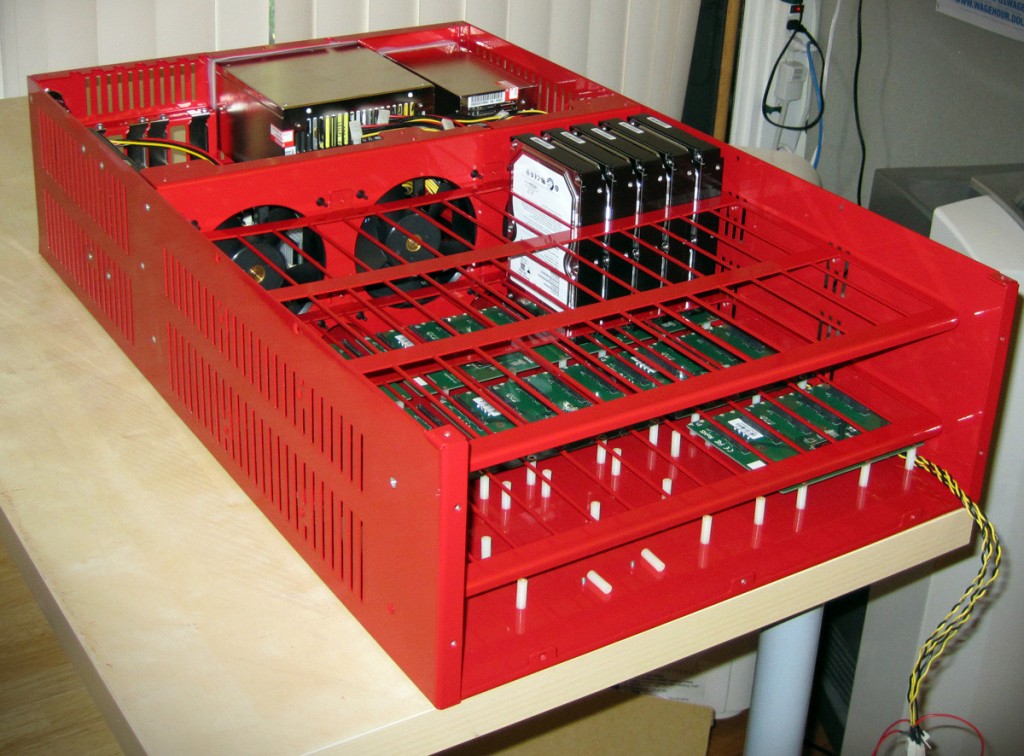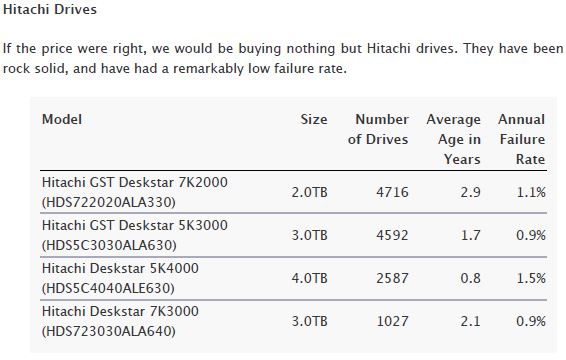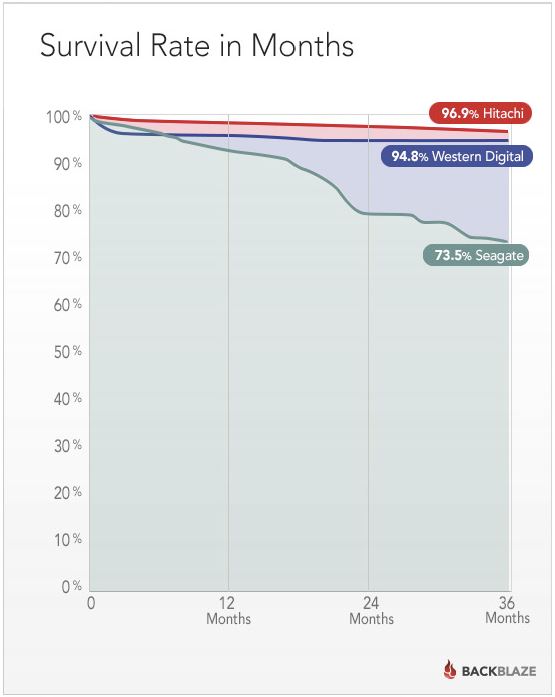Backblaze recently released results of its hard drive reliability study. We covered that Storage Reliability Figures from Backblaze release and one of the biggest questions was: aggregate numbers are great, but which hard drive manufacturer worked best. Backblaze finally released that information In a piece titled: What hard drive should I buy? The study is significant in that the company employs 27,134 consumer grade hard drives. That makes it one of the larger published reports of hard drive availability that we have read to date.
As a brief recap, Backblaze is a company that offers unlimited backup for $5/month. While many other vendors offer cloud storage other major vendors (Box, Dropbox, Mozy, Google and Amazon for example) do not offer unlimited storage, especially at $5/ month. There was a time when it appeared as though backup was heading to this type of model but a few things happened. Namely the cost of hard drives rose significantly after the Thailand flooding and the Western Digital – Hitachi and Seagate – Samsung mergers and some of the venture capital money started to wane as several players got securely established.
Backblaze took a somewhat different approach to its competitors insofar as it built its own low cost storage infrastructure. Enterprise storage is anything but inexpensive. Although heavily discounted (oftentimes upward of 60%) list prices for 1PB of enterprise storage in 2010-2011 were in the $1 million range. Instead of going this route Backblaze built its own storage “pods” capable of holding 180TB of storage in a system that costs under $2,000 excluding the cost of 45 drives.

The company is now on their (at least) third major revision of the chassis which you can learn about here:
The impact is that Backblaze is able to add drives to its network for approximately $44/ drive. This is significantly lower than traditional enterprise solutions from vendors such as EMC, IBM and NetApp that often cost several times as much to connect per drive. The basic premise is to achieve the highest drive density at the lowest cost possible.
When the Thailand floods almost overnight raised hard drives specifically, Backblaze had to move towards purchasing any drive it could find, even pulling hard drives from external enclosures.
These drives along with backup drives were then inserted into storage pods, tested, and eventually the pods were put into production.
All of this background helps explain a few things. First, Backblaze uses hard drives from all three major manufacturers. It also has a fairly unique environment where it is running drives 24×7 in RAID, in datacenters and rotated vertically on the connector. This is certainly not the intended market for the “consumer” drives but at least it provides a good population.
With that being said, the clear winner in their environment was Hitachi.

Overall the AFR picture looked like this:

For the record, we have about 60x 2TB and 3TB Hitachi drives in the lab that have run perfectly for years. We had 20x of the Seagate 7200.11’s that saw failures within the first few hours but have lasted over four years since. On the other hand, our 1.5TB Western Digital Green drives showed similar issues with all 8x failing within 16 months. After two failed quickly we actually had an early STH post on the subject over four years ago. An extremely small sample size with our 100 or so mechanical drives but we have seen some of these tendencies over time.
For anyone interested in storage reliability, this is certainly a study to look at. You can read the post in its entirety here.





Hard drive reliability?!? How can Seagate be that bad and stay in business?
Price of Drive and most failure occur after 1 year mark. A typical consumer will rather pay less upfront especially if buying more than one. Its not like the average consumer would bother to research the drive reliability anyway.